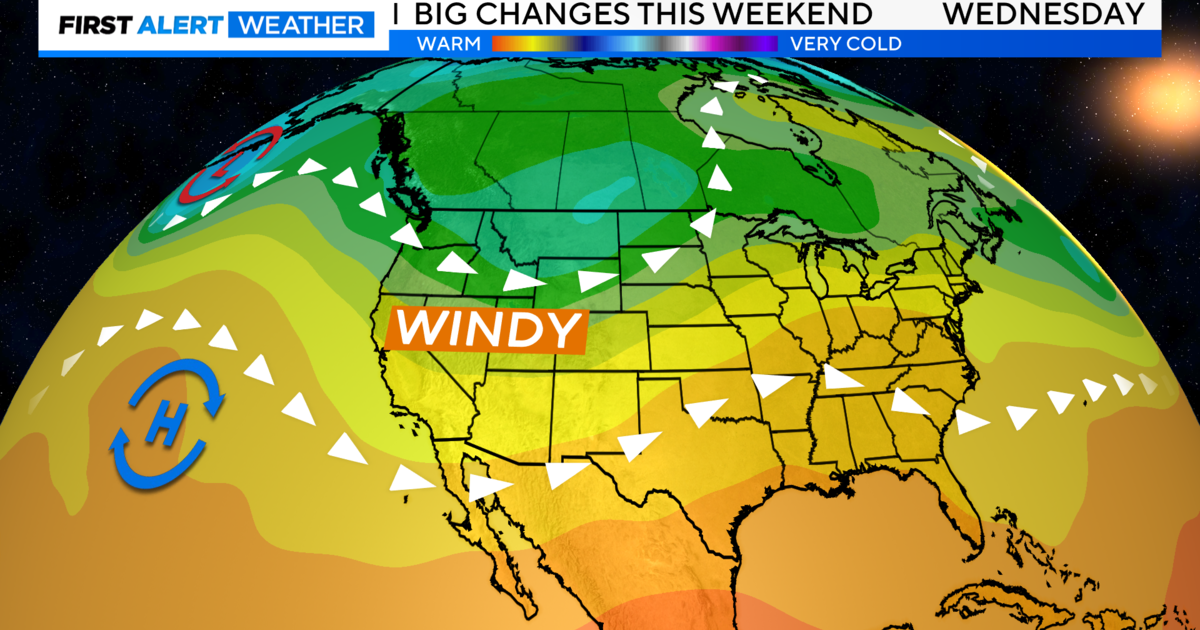Tornado Warnings Issued For Parts Of Central Valley
A powerful line of storms over 100 miles long swept across California today, bringing with it torrential rains, high winds and the threat of a tornado.
Around 1 p.m., a trained weather spotter saw two funnel clouds north of Turlock, prompting a tornado warning for parts of Stanislaus, Merced, and Tuolumne counties. Although the clouds were visible, a tornado did not touch down.
A severe storm warning has been issued for Stanislaus and Tuolumne Counties, which expires at 2:30 p.m. It could bring up to 4 inches of rain and 2-inch hailstones.
Click here for the latest weather conditions.
Tips for staying safe
(Source: NOAA)
- In a house with a basement, avoid windows. Get in the basement and under some kind of sturdy protection (heavy table or work bench), or cover yourself with a mattress or sleeping bag. Know where very heavy objects rest on the floor above (pianos, refrigerators, waterbeds, etc.) and do not go under them. They may fall down through a weakened floor and crush you. Head protection, such as a helmet, can boost survivability also.
- In a home with no basement, a dorm or an apartment, avoid windows. Go to the lowest floor, small center room (like a bathroom or closet), under a stairwell, or in an interior hallway with no windows. Crouch as low as possible to the floor, facing down; and cover your head with your hands. A bath tub may offer a shell of partial protection. Even in an interior room, you should cover yourself with some sort of thick padding (mattress, blankets, etc.), to protect against falling debris in case the roof and ceiling fail. A helmet can offer some protection against head injury.
- In an office building, hospital, nursing home or skyscraper: Go directly to an enclosed, windowless area in the center of the building -- away from glass and on the lowest floor possible. Then, crouch down and cover your head. Interior stairwells are usually good places to take shelter, and if not crowded, allow you to get to a lower level quickly. Stay off the elevators; you could be trapped in them if the power is lost.
- In a mobile home: Get out! Even if your home is tied down, it is not as safe as an underground shelter or permanent, sturdy building. Go to one of those shelters, or to a nearby permanent structure, using your tornado evacuation plan. Most tornadoes can destroy even tied-down mobile homes, and it is best not to play the low odds that yours will make it. This mobile-home safety video from the State of Missouri may be useful in developing your plan.
Recognizing a tornado
(Source: NOAA)
Weather forecasting science is not perfect and some tornadoes do occur without a tornado warning. There is no substitute for staying alert to the sky. Besides an obviously visible tornado, here are some things to look and listen for:
- Strong, persistent rotation in the cloud base.
- Whirling dust or debris on the ground under a cloud base -- tornadoes sometimes have no funnel!
- Hail or heavy rain followed by either dead calm or a fast, intense wind shift. Many tornadoes are wrapped in heavy precipitation and can't be seen.
- Day or night - Loud, continuous roar or rumble, which doesn't fade in a few seconds like thunder.
- Night - Small, bright, blue-green to white flashes at ground level near a thunderstorm (as opposed to silvery lightning up in the clouds). These mean power lines are being snapped by very strong wind, maybe a tornado.
- Night - Persistent lowering from the cloud base, illuminated or silhouetted by lightning -- especially if it is on the ground or there is a blue-green-white power flash underneath.



